If you are an avid surfer or a scuba diver, you might already be familiar with neoprene fabrics. They have become wetsuit essentials because of their unique ability to protect the human body from adverse temperatures and pressures. Neoprene protective wear has given us the power to go beyond our limits. So, what is neoprene material?
Neoprene is a polychloroprene material that serves as a rubber alternative. DuPont Corporation invented the material in 1930, and since then, it has become a popular choice to make swimsuits and other insulating garments. Neoprene apparel can help us navigate uncomfortably cold and hot environments.
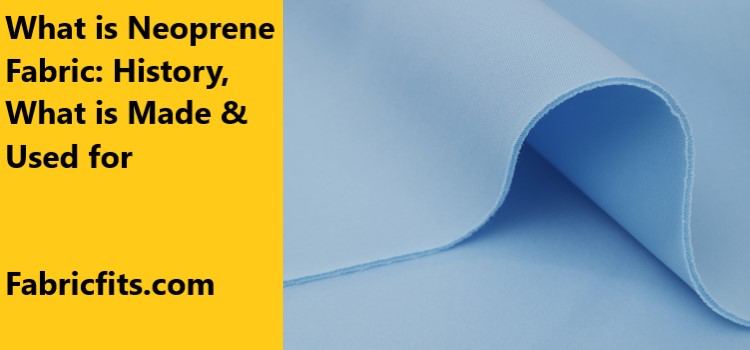
If you are not so familiar with neoprene, this article can help you figure out why neoprene suits can be a good choice for you. For more than half a century, athletes, adventurists, and even military personnel have used neoprene clothing to withstand adverse situations. Is it good enough for you, though? Read on to know for sure.
Table of Contents
What is Neoprene Fabric?
Neoprene is a rubber-like fabric that is scientifically known as polychloroprene. It’s waterproof and has excellent thermal regulatory properties. So, it is widely used in the personal protective equipment industry. Even though it was meant to be a rubber substitute, it proved to be an even better insulant than rubber.

Neoprene, in contrast to rubber, is impervious to oil and grease. It also boasts a much higher heat resistance than rubber. Neoprene can survive in situations where rubber suits will easily get damaged. For this reason, experts prefer neoprene over rubber as protective suit material. It’s also available in a vast range of price ranges.
What is Neoprene Made of?
Manufacturers use the free radical emulsion polymerization technique to produce neoprene in factories. This procedure essentially converts natural chloroprene into its synthetic equivalent, polychloroprene. Chloroprene stays in a solid state before the procedure. After undergoing radical emulsion polymerization, it turns into liquid polychloroprene.
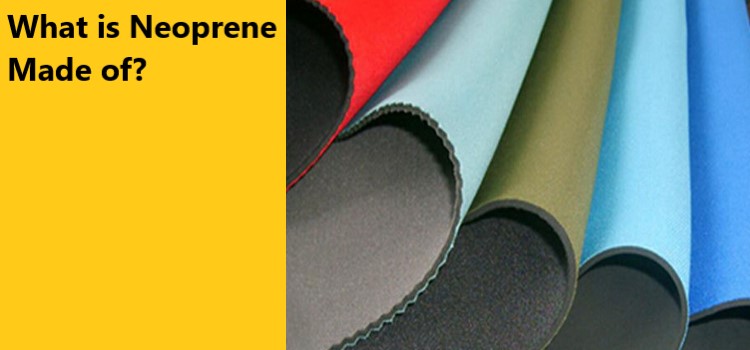
In most cases, liquid polychloroprene is shipped to textile mills. It is then mixed with chemicals to boost elasticity or emphasize other properties once it arrives. After that, it goes into a large-scale mixer and oven. After the mixture turns into an oblong mass like a bread loaf, it can be cut into slices of several thicknesses.
The slicing takes place in a colossal industrial machine. Neoprene comes in a number of different densities; typically, the thicker the polychloroprene, the more it will insulate and repel water. Usually, neoprene slices are about two to five millimeters thick. In regular wetsuits, the neoprene thickness is expected to be between two to three millimeters.
Once the Neoprene has been sliced, it is stacked onto pallets and sent to the clothing factories that will use it. Once the polychloroprene slices arrive, patterns are traced on them, and then full wetsuit fronts, as well as other clothing, accessories, and industrial products, are cut from a single slice. The slices are then sewn together into a comprehensive piece of clothing.
History of Neoprene Fabric
The invention of neoprene fabric is a classic “necessity is the mother of invention” case. As industrial activities gained steam in the early decades of the 20th century, the world faced a scarcity of rubber. Rubber production did not grow in tandem with the increased demand of the newly industrialized west.
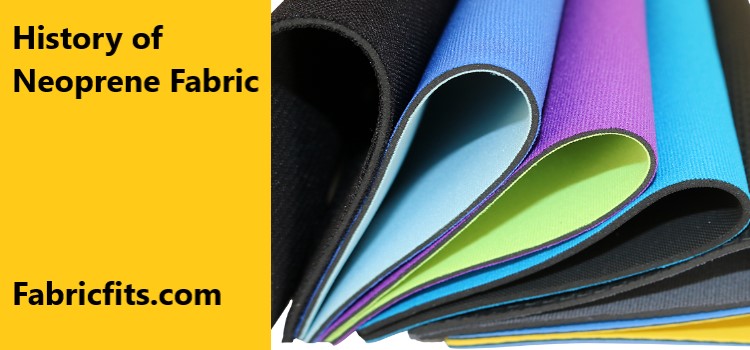
After the First World War ended, the price of rubber skyrocketed in the market. Therefore, the search for a viable rubber alternative began. US chemical giant Du Pont was one of the many companies that deployed their resources to cook up a synthetic that resembles the properties of rubber. But their efforts did not turn to fruition before the 1930s.
The Beginning
On a 1930 evening, Julius Arthur Nieuwland, an esteemed University of Notre Dame academic, delivered a lecture on divinyl acetylene. We won’t get into detailed organic chemistry analysis, but for the sake of our discussion, I must say that divinyl acetylene is an intermediate in neoprene manufacturing.
Du Pont officials used to keep tabs on the work of the best chemistry professors so that the company could pounce on scientists who were on the verge of groundbreaking discoveries. A Du Pont representative was in attendance as Nieuwland delivered his lecture. He understood the potential of the work Nieuwland had been doing and recruited him immediately.
At Du Pont, Nieuwland worked with leading plastics researchers in 1930 to create a mass-producible chemical based on divinyl acetylene. His strenuous efforts, combined with Du Pont’s resources, led to a breakthrough within a few months. That’s how the world got a superior variant of synthetic rubber in the form of neoprene.
The Progress
It was not an instant, though, since it had a terrible smell. In the subsequent years, Du Pont perfected the formula to eradicate the odor without compromising the material’s structural integrity.
So, by the end of the 30s, many companies were using neoprene to make gloves, tires, shoes, and other products instead of rubber.
Read Next: What is Acrylic Cloth Made of
Modern Neoprene Fabric
The modern version of the wet suit was perfected in 1950 when scientists realized that the skin and the wet suit can trap a thin layer of water trapped. And that could help the wearer retain the ideal body temperature.

Neoprene allows just enough water to penetrate the suit to serve this purpose. Hence, it became the gold standard in the wetsuit manufacturing industry.
Is Neoprene Toxic?
For wearers, neoprene presents little to no threat. It rarely triggers skin sensitivity issues. The chemical composition of the material is very stable. So you don’t have to worry about something harmful getting into your skin. You can put on a neoprene suit without a second thought.

That said, neoprene is not the most environmentally sustainable thing to produce. Neoprene is a non-degradable plastic material that severely impacts the environment. Producers also use extra chemical agents while making neoprene, which adds to the environmental toll of the material.
Read Next: Guide on Lawn fabric
Is Neoprene Breathable?
Neoprene has many traits. Unfortunately, breathability is not one of them. Traditional neoprene clothes are made to retain heat. So, you will be sweating profusely wearing neoprene clothes for prolonged periods on a summer day. That’s why neoprene is mostly used for wetsuits so that you can stay warm even in ice-cold water.

That said, you might come across some breathable versions of neoprene. However, I would not recommend those products because of their reduced durability and winter resistance. Neoprene suits can be suitable for warm water, but they are thinner, and they are not much comfortable to wear outside the water.
Read Next: How is Poplin Fabric Made
Is Neoprene Heat Resistant?
It sure is! Neoprene suits can withstand temperatures as high as 275° F. They won’t catch fire unless you crank the heat up to 500°F.
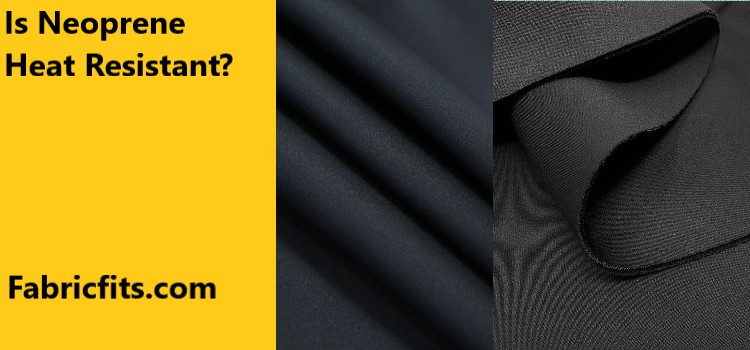
Neoprene can stay unaffected by heat for longer periods compared to natural rubber. Some manufacturers use fire retardant agents to increase the heat resistance of their suits.
Is Neoprene Waterproof?
Yes, neoprene is waterproof. However, some neoprene suits have small perforations to allow for a small amount of water to get in.
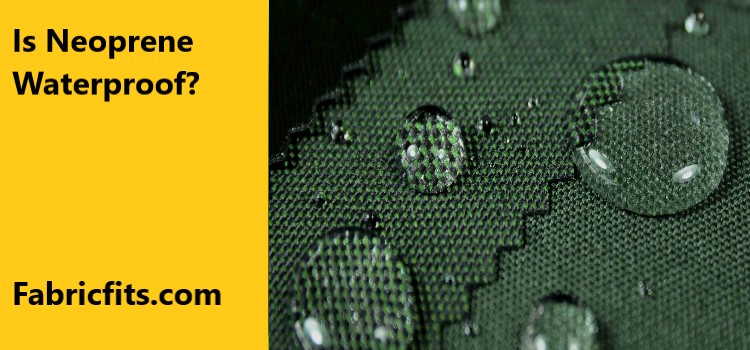
But, in general, neoprene allows for minimal water permeability. It does not absorb water. Neoprene is more of a water-repellant. So, it’s the perfect insulant for wetsuits.
Is Neoprene Fabric Stretchy?
Since I have been speaking highly of neoprene’s heavy-duty nature, you might have been under the impression that it’s not elastic at all. Surprisingly, neoprene allows for a decent amount of flexibility. So, wearers do not face much of a hassle to get in and out of neoprene suits.
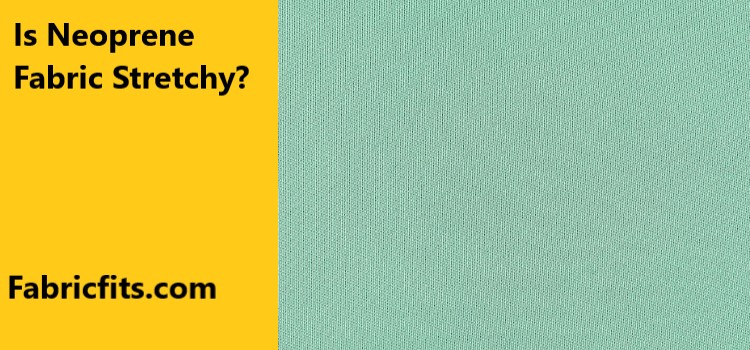
Some neoprene is more elastic than others. If you use the cheapest neoprene suits in the market, you can expect them to stretch a little bit, but not two or three times their size. You can get as much as 300% stretchability in premium-grade neoprene. This is great for the underwater agility of divers.
One common mistake is buying a somewhat too-tight suit in the hopes that it would loosen up after a while. First, you’ll need to take a few dives before the fabric stretches even slightly. Also, the wet suit or piece of clothing shouldn’t be so restrictive that it makes it hard to move around.
Will Neoprene Stretch Over Time?
Yes, neoprene can stretch as you use it over time. But that does not necessarily mean you will have to throw out your old suit and get a new one.
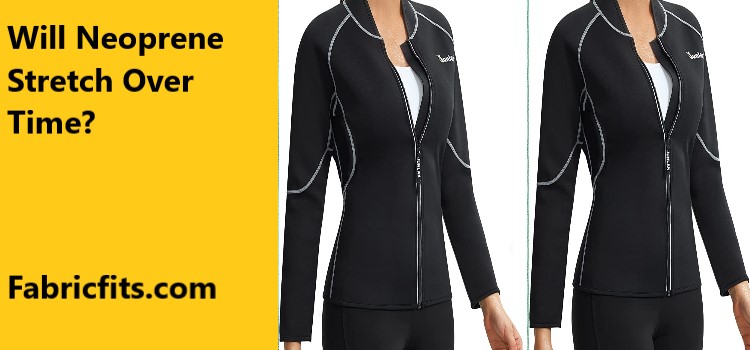
If the suit gets too loose, it becomes more unfit to navigate underwater. As long as you feel that the seal of your suit is not compromised and you did not lose mobility underwater, it’s fine to use.
Should You Try to Stretch Your Neoprene Fabric Apparel on Purpose?
While it’s possible to stretch your neoprene gloves, shoes, or suits to stretch and get a proper fit, I advise against it. Many manufacturers use nitrogen gas to treat their neoprene products. If you attempt to stretch the item, the gas will get out of it and make the outer surface break down faster.
Is Neoprene Fabric Expensive?
Even though cheaper forms of neoprene are available, it’s an expensive material in general. In fact, neoprene fabric is more expensive than most petrochemical-based fabrics.
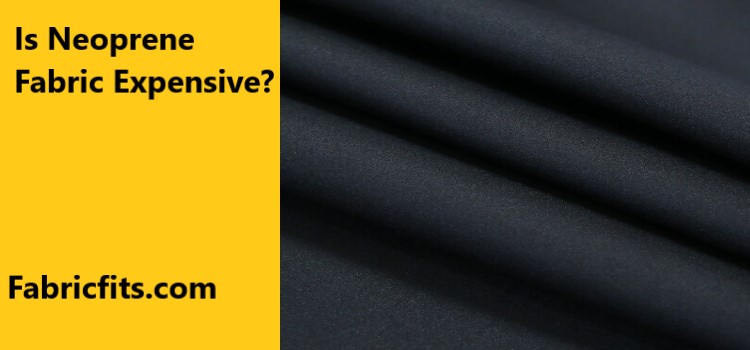
It has a complicated production procedure, which is primarily responsible for the high price. Its versatility and usefulness also contribute to the high pricing.
What is Neoprene Used for?
I have mostly talked about neoprene wetsuits, but the use of neoprene happens to be far more multifaceted.

You can buy neoprene jackets, boots, and gloves from fashion retailers. Because of its distinctive properties, neoprene has several industrial applications as well. Neoprene is also used to make military equipment.
Here are some specific neoprene applications:
Wetsuits
Looking for an ideal wetsuit for scuba diving or jet skiing? You won’t find better choices than neoprene wetsuits. It will conform to your figure, so you can hit the waves in comfort. No need to be paranoid about any embarrassing wardrobe malfunctions.
Device Cases
Cases for electronic devices are frequently made out of neoprene. This plastic may not be the best at absorbing shock. But it does a commendable job of preventing damage from scratches and keeping the equipment safe from minor drops. Got caught in the rain with your smartphone or laptop? Nothing to worry about if they are inside a neoprene case.
Neoprene cases are the best for bringing your smart devices to the beach. They will stay safe from accidental spills of water. Snowy days might not have as bad a reputation for smart device damage as sweltering heat or wet weather, but low-freezing temperatures can also mess up their circuitry. Neoprene cases can shield them from that as well.
Fishing & Rain Boot
You can’t be afraid to get your feet wet if you are dedicated to hooking some great catches! Take some neoprene boots on your fishing trips to step into the water whenever you need to. Neoprene boots are also excellent choices as rain boots as they barely let any water in. Your feet will remain as dry as a parched summer day.
Military Equipment
Du Pont is one of the biggest defense contractors in the US. Neoprene products are one of the company’s most profitable offerings to the US military. Apart from military clothing and footwear, the army also purchases neoprene vehicle covers and other items from Du Pont.
Automotive Parts
Your car engine has been obnoxiously loud lately? Try pairing it up with neoprene fan belts and hoses. You won’t have to worry about the material breaking while you’re driving because it’s incredibly durable. Car manufacturers also use neoprene at the bottom of car windows to facilitate effortless rolling up and down of the window.
Speaker Cones
Neoprene is also a great speaker cone material. The material strikes the right balance between flexibility and rigidity. Therefore, neoprene speaker cones can produce exquisite sound quality.
Final Words
Neoprene fabric is not an everyday streetwear material. But, it can be the best choice of fabric for the situations it’s intended to tackle. Need a great wetsuit? Get a neoprene one. Want to keep your body comfy out in the cold? A neoprene jacket would do wonders! It’s a bona fide multi-purpose material. So, the slightly high price tag is quite justified, I would say!
